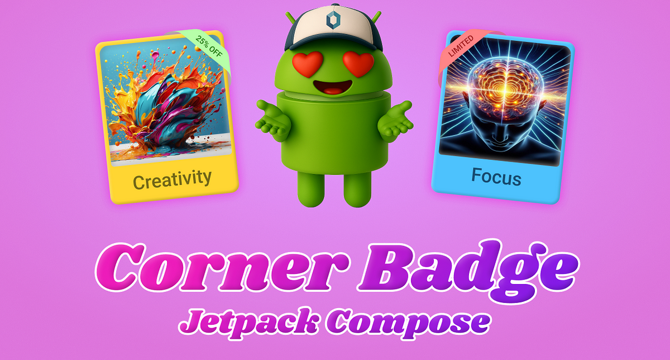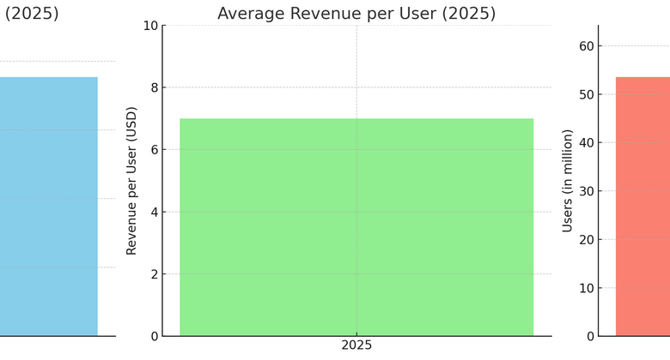Software News
Medium
188

Image Credit: Medium
Alternative Applications of SDLC: Flexible, User-Centric, and Real-Life Aligned Approaches
- In today's digital world, traditional software development life cycle (SDLC) models are no longer enough for rapidly changing user expectations and diverse products.
- Alternative approaches like DevOps with CI/CD, Design Thinking, Discovery and Delivery workflows, Lean UX with Agile, no-code/low-code tools for MVPs, and open-source community-driven projects are gaining popularity.
- Real-life examples include Netflix utilizing CI/CD for seamless deployments, Airbnb boosting bookings with Design Thinking, and Spotify balancing testing new features with implementing approved ones in sprints.
- These alternative SDLC models prioritize user feedback, rapid iteration, and collaboration, shaping the future towards purposeful, empathetic, and agile software development.
Read Full Article
11 Likes
Insider
78

Image Credit: Insider
An exclusive look inside the hottest legal AI startup
- Harvey, a startup using generative AI to assist lawyers, aims to automate legal work efficiently.
- The legal profession's reliance on rules and dense text makes it suitable for generative AI applications like Harvey.
- Harvey leverages decades of legal data for training AI models to streamline tasks traditionally done by lawyers.
- Generative AI tools are also being explored by consulting firms like Deloitte, EY, PwC, and KPMG to enhance efficiency.
- Tim Cook benefited from the US-China tariff pause, while Google faces antitrust challenges and ChatGPT competition.
- The tech industry compensation trends may not increase significantly for software engineers unless in AI roles.
- Meta, Microsoft, and Amazon are among the tech giants dealing with AI-related developments and challenges.
- An experiment using ChatGPT to create a summary image of tech news highlighted some challenges and inconsistencies.
- The article encourages feedback from legal professionals and consultants on their experiences with AI tools like Harvey.
- Readers are invited to share insights and concerns about the impact of AI on the legal and consulting industries.
Read Full Article
4 Likes
Dev
157

Image Credit: Dev
$20,000 Blockchain Grant Open for African Developers: Build a Micro-Payments MVP on Fedrok Blockchain
- A funding opportunity of $20,000 is open for African developers interested in creating a micro-transaction platform on the Fedrok Blockchain to address financial access challenges in Chad and Niger.
- Successful applicants will receive funding, technical documentation, mentorship, access to the Fedrok Blockchain platform, and the opportunity to deploy in Chad and Niger.
- The platform should focus on mobile-first micro-transactions with key features like P2P payments, USSD or SMS-based interfaces, wallet functionality, and integration with Fedrok Blockchain.
- Africa-based developers with experience in blockchain, fintech, or micro-payment platforms are eligible to apply by submitting proposals by June 1, 2025, for a chance to build impactful blockchain solutions for financial inclusion in Africa.
Read Full Article
9 Likes
Knowridge
149

Image Credit: Knowridge
Virtual time-freezing technology lets us see inside spinning machines
- A groundbreaking technology called 'virtual time freezing' developed by researchers at Jinan University in China allows scientists to see inside spinning engines and tools with clarity even at high speeds.
- Traditional methods like high-speed cameras are expensive and may result in blurry images when imaging fast-spinning objects.
- The new imaging system uses a single-pixel detector and structured illumination to project synchronized light patterns onto spinning objects, capturing clear real-time images.
- This technology has the potential to revolutionize industries by enabling real-time monitoring of machinery such as turbine blades, cutting tools, and jet engine fan blades without the need to stop the machines.
Read Full Article
8 Likes
Discover more
- Programming News
- Web Design
- Devops News
- Open Source News
- Databases
- Cloud News
- Product Management News
- Operating Systems News
- Agile Methodology News
- Computer Engineering
- Startup News
- Cryptocurrency News
- Technology News
- Blockchain News
- Data Science News
- AR News
- Apple News
- Cyber Security News
- Leadership News
- Gaming News
- Automobiles News
Tech Radar
399

Image Credit: Tech Radar
Forget the Force, AI brings the late James Earl Jones’ iconic Darth Vader voice to Fortnite
- Disney and Epic Games are bringing the late James Earl Jones' iconic Darth Vader voice to Fortnite using AI technology.
- The collaboration will allow Fortnite players to interact with Darth Vader in-game and recruit him to help win a Victory Royale.
- The voice of Darth Vader was recreated using Google's Gemini 2.0 Flash model and ElevenLabs' Flash v2.5 model.
- Disney and Epic Games ensured transparency, consent, and safety in this innovative feature to respect the legacy of James Earl Jones.
Read Full Article
24 Likes
CSS-Tricks
0

Image Credit: CSS-Tricks
HTML Email Accessibility Report 2025
- The Email Markup Consortium (EMC) released its 2025 study on accessibility in HTML emails, revealing similar issues from previous years.
- Out of 443,585 emails analyzed, only 21 passed all accessibility checks, all authored by the same individual representing two brands.
- Automated testing is essential but may not catch all accessibility issues, particularly related to internationalization and common email design problems.
- The report highlights the lack of support for accessibility features in most email clients, with only one out of 44 evaluated fully supporting essential HTML, CSS, and ARIA features.
Read Full Article
Like
Medium
377

Image Credit: Medium
Let’s walk through what actually happens, step by step, when you enter a URL like https://www.google
- URLs like https://www.google consist of the protocol HTTPS that ensures secure communication between the browser and server via TLS encryption.
- The www part of a URL is a subdomain that typically represents the public-facing area of a website, while the domain name google.com comprises the second-level domain (google) and the top-level domain .com.
- When a URL is entered, the browser translates the domain name into an IP address through DNS servers, starting from a root server and ending with the authoritative server for the specific domain.
- The connection between the browser and the server is established using TCP on port 443 for HTTPS, followed by a TLS handshake to secure the connection with encryption and exchange of session keys.
Read Full Article
22 Likes
Medium
434

Image Credit: Medium
How to Create a Custom Corner Badge in Jetpack Compose
- Custom corner badge in Jetpack Compose involves creating a strip-shaped badge that sits at a corner of a component, rotated by 45°, with customizable properties.
- To achieve this, a custom Shape named CornerBadgeShape is defined for creating the badge's strip with adjustable roundness.
- A sealed class BadgeCorner is used to position the badge in any of the four corners by representing each corner option along with its alignment and mirroring information.
- The implementation involves defining the CornerBadgeBox composable that brings together the necessary elements and layout adjustments for creating the custom corner badge.
Read Full Article
26 Likes
Dev
43

Image Credit: Dev
The Best LibreOffice Alternative for Linux (and Beyond!) — My Unexpected Discovery
- The author, disappointed with performance issues in LibreOffice Calc on Linux, explored alternatives like WPS Office, SoftMaker, and Google Docs before discovering ONLYOFFICE.
- Linux users often face challenges with productivity suites, making a reliable and modern alternative like ONLYOFFICE crucial for improved performance and compatibility.
- ONLYOFFICE stood out with features like perfect formatting transition from LibreOffice, fast UI, real-time collaboration tools, cross-platform support, and a built-in PDF Editor.
- Key advantages of ONLYOFFICE over LibreOffice include cross-platform compatibility, feature-rich applications, mobile-friendly interface, real-time collaboration, and Office Open XML support.
Read Full Article
2 Likes
Scand
43

Image Credit: Scand
DeFi Staking Platform Development Company: Full Guide to Building a Secure and Scalable Solution
- DeFi, or Decentralized Finance, involves financial services on a blockchain, eliminating middlemen like financial institutions.
- Staking in DeFi allows users to earn passive income while securing and supporting blockchain networks.
- Staking involves users locking up cryptocurrency to receive rewards, primarily used in Proof of Stake (PoS) blockchains.
- Different staking methods include direct staking, delegated staking, pool staking, and exchange-based staking.
- Benefits of staking for users include passive income, governance participation, non-custodial control, and investment selection.
- For businesses, staking can enhance user engagement, stabilize token prices, generate income, and attract liquidity.
- A DeFi staking platform allows users to stake cryptocurrencies to earn rewards like interest, governance tokens, or transaction fees.
- Key features of a DeFi staking platform include smart contract development, multi-cryptocurrency support, earning estimators, reminders, and referral bonuses.
- Steps to build a DeFi staking platform include market research, blockchain selection, UI/UX design, partnering with a development company, testing, security audits, deployment, and post-launch maintenance.
- The cost of building a DeFi staking platform varies based on factors like technology stack, security, design, and custom features, with estimated ranges from $40,000 to $250,000+.
Read Full Article
2 Likes
TechBullion
17

Image Credit: TechBullion
How Car Check HPI UK Helps You Avoid Costly Mistakes
- Car check HPI UK is crucial for avoiding costly mistakes when buying a second-hand car.
- It provides verified facts about a vehicle's history, including past accidents, outstanding finance, and odometer tampering.
- The service helps in detecting outstanding finance, previously declared total losses, mileage discrepancies, and stolen vehicles.
- A comprehensive car check HPI report typically costs between £10 and £25, offering significant peace of mind compared to potential financial losses.
Read Full Article
1 Like
Engadget
70

Image Credit: Engadget
'Fortnite' is offline on iOS around the world
- Apple has blocked Fortnite on both the US App Store and the EU's iOS version of its Epic Games Store, despite Epic submitting the game after winning a court case against Apple.
- Fortnite had been available on iPhones in Europe since August last year due to EU rules allowing third-party iOS stores.
- Epic CEO Tim Sweeney criticized Apple for using App Review as a tool to obstruct competition, but Apple has not commented on the situation.
- The conflict between Apple and Epic revolves around profit-sharing, with Apple wanting a share of sales through its App Store and Epic preferring to retain its revenue. The latest Fortnite version included payment systems for both Apple and Epic's store.
Read Full Article
4 Likes
99Bitcoins
241

Former Coinbase Germany CEO Joins LUKSO, Aims to Break Big Tech’s Grip on Creator Autonomy
- Jan-Oliver Sell, former Managing Director of Coinbase Germany, joins LUKSO, a decentralized platform aiming to empower creators against centralized platforms like Google and Meta.
- LUKSO promotes creator autonomy by utilizing LUKSO Standards Proposals smart contract system, ensuring creators control their content and identity without fear of being deplatformed.
- The platform offers transparency and trust through universal profiles, enabling censorship-proof, on-chain identities for creators and AI agents to interact effectively with the public.
- With proper standards and embracing Web3 technology, LUKSO aims to enhance user experience, ownership, and creative potential, challenging the convenience of centralized systems.
Read Full Article
14 Likes
Popsci
416

Image Credit: Popsci
How an abandoned mine became Korea’s moon lab
- Korea Institute of Geoscience and Mineral Resources (KIGAM) is repurposing an abandoned mine shaft in Taebaek City into a lunar research facility.
- The abandoned mine will serve as a simulation site for lunar-like conditions, offering an ideal testing ground for space technologies.
- Scientists aim to demonstrate technologies for extracting resources directly from the moon, focusing on helium-3 and rare-earth elements.
- KIGAM conducted a live demonstration of lunar rover technology and in-situ resource utilization devices inside the abandoned mine shaft.
- The institute showcased devices like a Laser-Induced Breakdown Spectroscopy (LIBS) system and a resource extractor designed for lunar regolith.
- Research partnerships with institutes like Korea Atomic Energy Research Institute and Korea Electrotechnology Research Institute are driving advancements in lunar exploration technology.
- Efforts are underway to develop approximately 10 major exploration equipment pieces for lunar research by 2029.
- Challenges remain in replicating the lunar environment within the mine, with plans to enhance simulation accuracy through gravity-altering technologies.
- The initiative represents a shift from coal mining in Taebaek to space research, aiming to bring lunar resources like helium-3 to Earth for potential fusion energy use.
- KIGAM's mission signifies a transformation from coal-driven economic growth to pioneering space resource development, showcasing Korea's commitment to lunar exploration.
Read Full Article
25 Likes
Idownloadblog
368

Image Credit: Idownloadblog
Apple officially rejects Fortnite mobile App Store submission as Epic Games pulls game from platform worldwide
- Apple has officially rejected the Fortnite mobile app submission by Epic Games for the iOS App Store.
- After a court ruling requiring third-party payment options, Epic Games resubmitted the app for approval, but faced delays in the review process.
- As a response to the rejection, Epic Games has made Fortnite mobile unavailable worldwide, including in the European Union.
- This move could potentially lead to another legal dispute between Epic Games and Apple over the cross-platform functionality and App Store policies.
Read Full Article
22 Likes
For uninterrupted reading, download the app